This post shows steps for students and new users to set up parental controls on Windows 11 to restrict website access, limit screen time, and enable some security measures to protect children or other accounts.
Before you can set up parental controls, you and your child must have Microsoft accounts. A Microsoft account is required to set up parental control.
Your account will be a parent account, and the child or children’s account will be tied to yours. As a parent, you can control and view reports related to your child or children’s online activities.
The parent account should also be an administrator on the device you want to restrict. Ensure you’re an administrator on Windows and that your child’s or children’s account is standard. With standard accounts, they cannot make changes or upgrade their account to administrator.
You can sign up and create a Microsoft account using the link below.
How to Sign up for a Microsoft Account
To set up parental controls on Windows 11, follow the steps below.
How to create a Microsoft account on Windows 11
As mentioned, Microsoft accounts must set up parental control on Windows 11 and other devices.
Click on the link below to learn how to create a Microsoft account.
How to create a Microsoft account online
Once you’ve read and created the Microsoft accounts above, one for you and the other for your child or children, continue below.
How to create a Windows child account
Now that you’ve created Microsoft accounts for you and your child log onto Windows 11 and create your child’s account.
Windows 11 has a centralized location for the majority of its settings. Everything can be done, from system configurations to creating new users and updating Windows from its System Settings pane.
To get to System Settings, you can use the Windows key + I shortcut or click on Start ==> Settings, as shown in the image below:

Alternatively, you can use the search box on the taskbar to search for Settings. Then select to open it.
Windows Settings pane should look similar to the image below. In Windows Settings, click Accounts, and select Family & other users on the right pane of your screen, as shown in the image below.
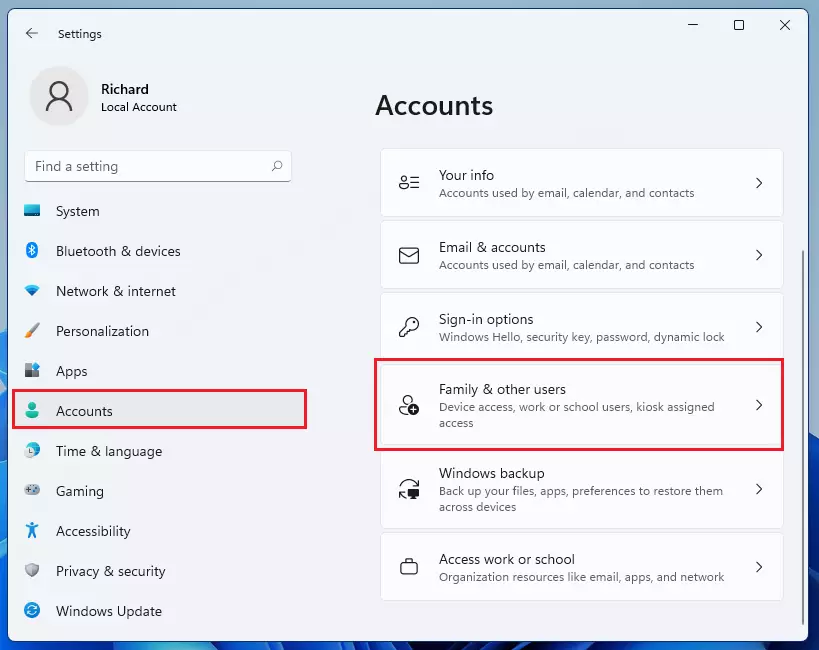
On the Family & Other uses settings page, under Other users, click the Add account button highlighted below. Windows 11 will automatically create a Microsoft online account for the new user.

Windows automatically tries to sign you up for a Microsoft online account. Microsoft account is an online email address and password used with Outlook.com, Hotmail, Office, OneDrive, Skype, Xbox, and Windows.
To add a Microsoft account, type in the user email address and click Next.
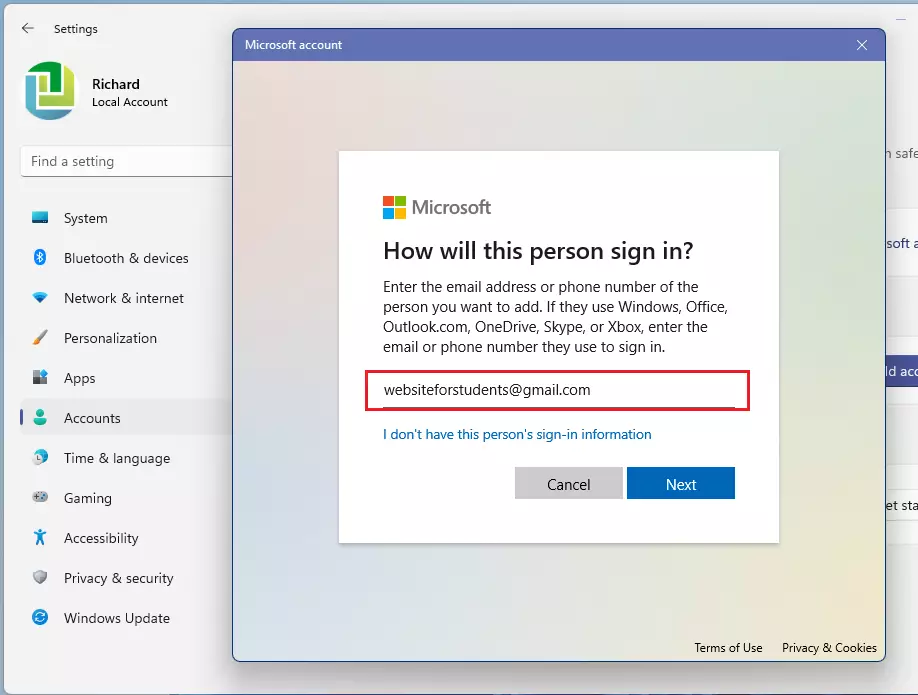
Once you type the child’s email address, Windows should link the online account to the user profile. Click Finish to complete the setup.
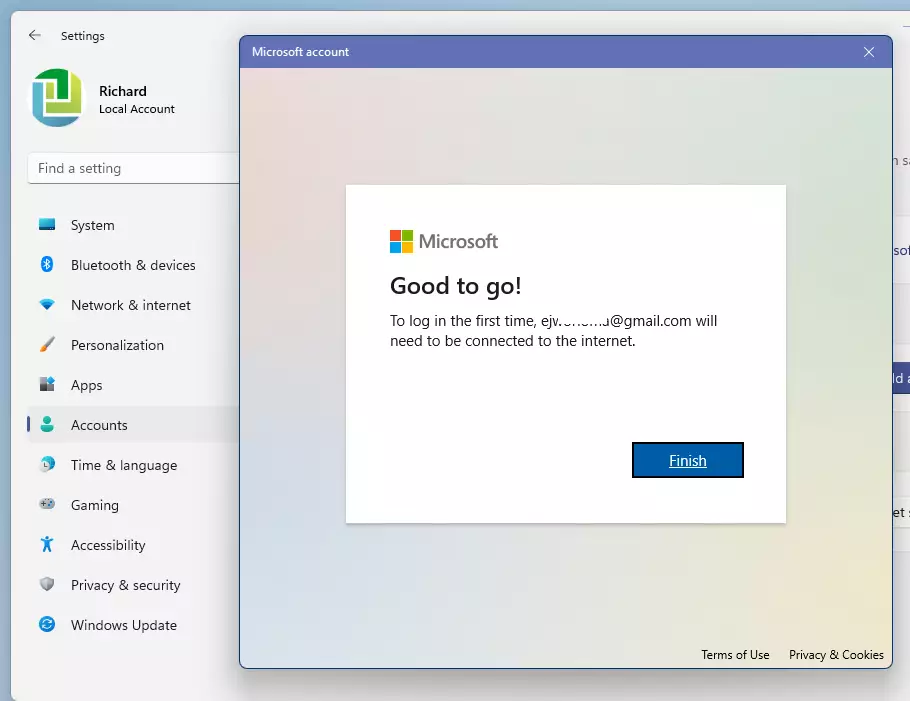
The child can now log in with their Microsoft account.
While still logging into your account, return to the Windows Settings ==> Accounts ==> Family & other users ==> Manage family settings online or remove an account.
Click on the link to take you to your Microsoft online account.
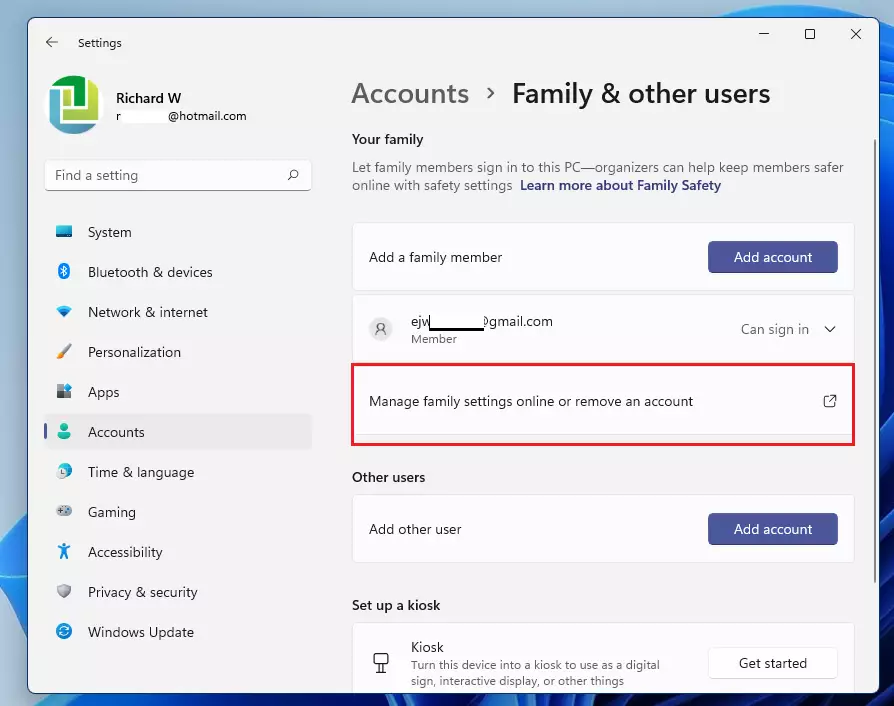
From there, you can manage your child’s account, including screen time, browsing history, web filter, and more.
Select an account from the dashboard you want to manage.
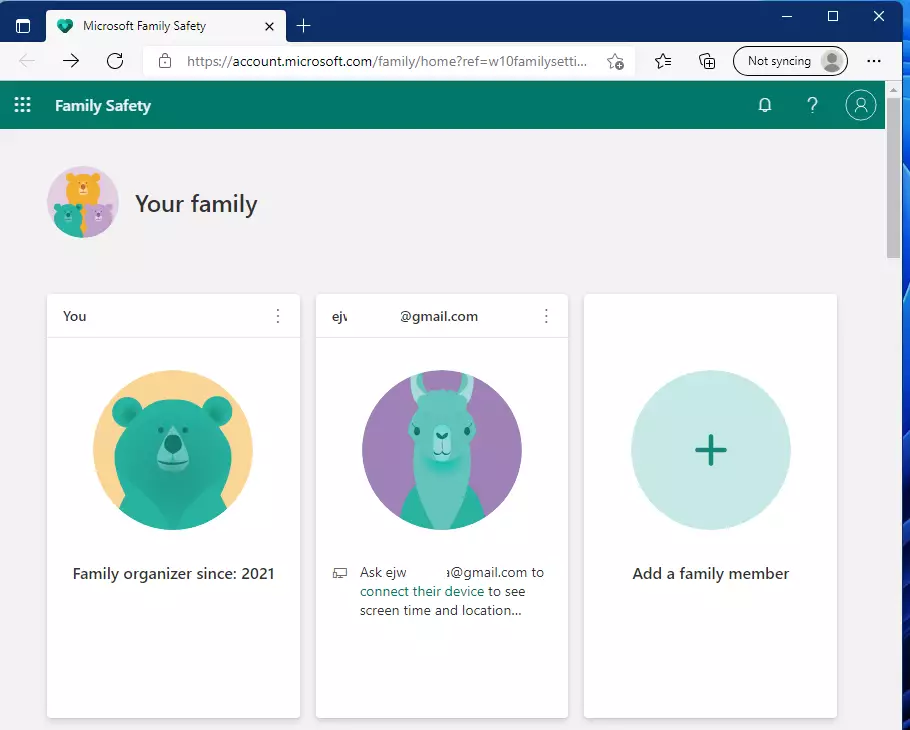
Begin managing a child account from the dashboard.
Click Screen Time to set screen time limits for your child. You can also use one schedule on all devices toggle to set universal screen time limits.
Click Content filters to limit your child’s access to websites and apps.

You can set more options from the dashboard for each account.
Conclusion:
- Setting up parental controls on Windows 11 is essential for ensuring a safe online experience for children.
- Both parents and children must have Microsoft accounts to utilize these features effectively.
- Parents can monitor online activities and adjust settings according to their family’s needs by creating a child account.
- The Windows Settings pane provides a user-friendly interface to manage accounts and parental controls.
- Consistent screen time management, browsing history, and content filters can help foster responsible digital behavior.
- Staying involved and regularly reviewing settings will contribute to a balanced and secure environment for children.

Leave a Reply